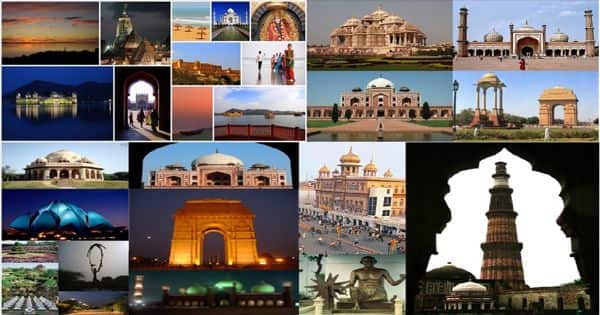Historical associations and geographical gifts have made India a paradise for tourists. Indeed, India has received nature’s bounty. There are scenic spots on hills and sea-sides that are matchless. Besides, there are historical sights like see Ranganathan of Tipu Sultan in Mysore, Khosbag, and Hazar Duari in Murshidabad in Bengal, fort William of Calcutta, the spot on the river Daya where Emperor Ashoka fought the battle of killings, a chore in Rajputana with memories of Rana Pratap and many more such noted places.
Foreign tourists feel much more interested in visiting and going round archaeological sites like the Taj of Agra, fields of Kurukshetra, Hastinapur, (Old Delhi) Kutub Minar and Humayun Tomb of Delhi, Asoka Pillar of Allahabad, the Sun observatory of Jaipur, the Caves of Elephanta off Bombay, Ajanta and Elora (Maharastra), Khajurahs, (Madhya Pradesh), the Stupa of Sanchi (Madhya Pradesh), the char minar of secendrabad, etc. besides, India is very rich and celebrated for her wealth of temples and places of worship. The Jagannath Temple at Puri, the Sun Temple at Konarak, Tirupati, Meenakshi, Rameswaram, Bishnupur, Kaaya Kumari, and numerous other temples with marvelous artistic designs on the walls, testify to the skill of India’s ancient architects. Added to this, there are now sports like dams and barrages, bridges and stadiums – that’s are also wonders of a modern engineering feat. Calcutta may take pride in having the underground metro rail, the Victoria Memorial, the stay-pull bridge over Hoogly, named Vidyasagar Setu, etc. the Nehru Tunnel at Banihal in Kashmir. The Brindavan Garden of Mysore, Vivekananda Rock temple are also focal points of tourists and feasts for the eyes.
Thus in India architects of the medieval and modern days have joined hands to enhance the glory of the country and to enrich the attractions of tourists. No wonder that India today has a big draw for tourists, coming from all parts of the world. About three million foreign tourists come to visit India every year.
As a result, the tourist trade in India has been flourishing all the time. Indeed, tourism is a smokeless industry. It is India’s second-highest foreign exchange earner. Three billion dollars approximately flow into India from the tourist traffic to develop this industry Government of India form the tourist traffic. To develop this industry-government of India carries on vigorous propaganda with illustrated books and pamphlets and advertisement-slides through her foreign embassies. Internally facilities for the tourists have also been increased. Roads and transports, hotels, and tourist-lodges have been built and provided on more or less a luxurious scale to attract tourists and to cater to their needs and amenities.
Pandit Neher’s advice to the Indian people is quite relevant – “Our tourists are our guests.” So Indian people should accord a warm welcome to the tourists and behave with them with all the courtesy. Besides foreign-exchange earning, tourism promotes international understanding. With foreign tourists, we can exchange our ideas. They are, so to say, non-official ambassadors o their countries. So many wrong ideas about India and the Indians can be removed through conversation and public lectures and receptions of tourists. Thus tourism forges (produces) invisible friendly and financial links with foreigners. Rightly conducted, it is a double blessing – for those who come and those who welcome them.
















